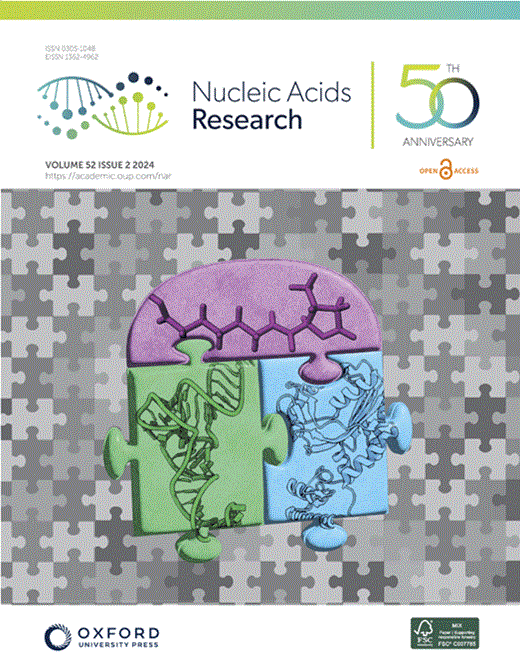PARP1-TRIM44-MRN loop dictates the response to PARP inhibitors
IF 16.6
2区 生物学
Q1 BIOCHEMISTRY & MOLECULAR BIOLOGY
引用次数: 0
Abstract
PARP inhibitors (PARPi) show selective efficacy in tumors with homologous recombination repair (HRR)-defects but the activation mechanism of HRR pathway in PARPi-treated cells remains enigmatic. To unveil it, we searched for the mediator bridging PARP1 to ATM pathways by screening 211 human ubiquitin-related proteins. We discovered TRIM44 as a crucial mediator that recruits the MRN complex to damaged chromatin, independent of PARP1 activity. TRIM44 binds PARP1 and regulates the ubiquitination-PARylation balance of PARP1, which facilitates timely recruitment of the MRN complex for DSB repair. Upon exposure to PARPi, TRIM44 shifts its binding from PARP1 to the MRN complex via its ZnF UBP domain. Knockdown of TRIM44 in cells significantly enhances the sensitivity to olaparib and overcomes the resistance to olaparib induced by 53BP1 deficiency. These observations emphasize the central role of TRIM44 in tethering PARP1 to the ATM-mediated repair pathway. Suppression of TRIM44 may enhance PARPi effectiveness and broaden their use even to HR-proficient tumors.PARP1-TRIM44-MRN 环路决定了对 PARP 抑制剂的反应
PARP抑制剂(PARPi)对有同源重组修复(HRR)缺陷的肿瘤有选择性疗效,但PARPi处理过的细胞中HRR通路的激活机制仍是个谜。为了揭开这一谜团,我们通过筛选 211 个人类泛素相关蛋白,寻找连接 PARP1 和 ATM 通路的介质。我们发现 TRIM44 是一个关键的介导因子,它能在 PARP1 活性之外将 MRN 复合物招募到受损染色质。TRIM44 可结合 PARP1 并调节 PARP1 的泛素化-PAR 化平衡,从而促进 MRN 复合物的及时招募以修复 DSB。暴露于 PARPi 时,TRIM44 通过其 ZnF UBP 结构域将其结合从 PARP1 转移到 MRN 复合物。在细胞中敲除 TRIM44 能显著提高细胞对奥拉帕利的敏感性,并克服 53BP1 缺乏引起的对奥拉帕利的耐药性。这些观察结果强调了 TRIM44 在将 PARP1 与 ATM 介导的修复途径拴在一起方面的核心作用。抑制TRIM44可能会提高PARPi的有效性,并扩大其在HR缺陷肿瘤中的应用。
本文章由计算机程序翻译,如有差异,请以英文原文为准。
求助全文
约1分钟内获得全文
求助全文
来源期刊

Nucleic Acids Research
生物-生化与分子生物学
CiteScore
27.10
自引率
4.70%
发文量
1057
审稿时长
2 months
期刊介绍:
Nucleic Acids Research (NAR) is a scientific journal that publishes research on various aspects of nucleic acids and proteins involved in nucleic acid metabolism and interactions. It covers areas such as chemistry and synthetic biology, computational biology, gene regulation, chromatin and epigenetics, genome integrity, repair and replication, genomics, molecular biology, nucleic acid enzymes, RNA, and structural biology. The journal also includes a Survey and Summary section for brief reviews. Additionally, each year, the first issue is dedicated to biological databases, and an issue in July focuses on web-based software resources for the biological community. Nucleic Acids Research is indexed by several services including Abstracts on Hygiene and Communicable Diseases, Animal Breeding Abstracts, Agricultural Engineering Abstracts, Agbiotech News and Information, BIOSIS Previews, CAB Abstracts, and EMBASE.
 求助内容:
求助内容: 应助结果提醒方式:
应助结果提醒方式:


